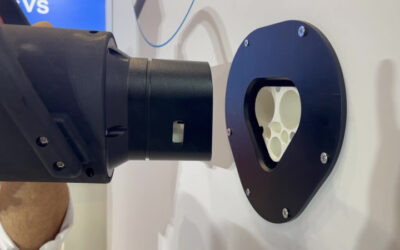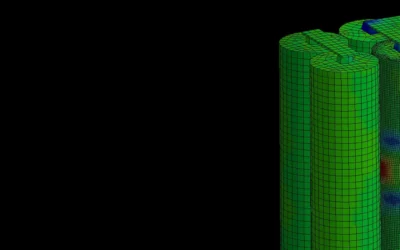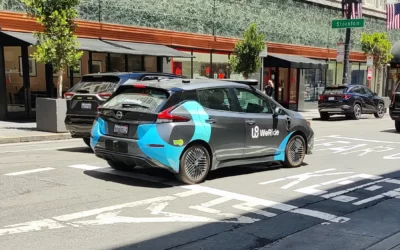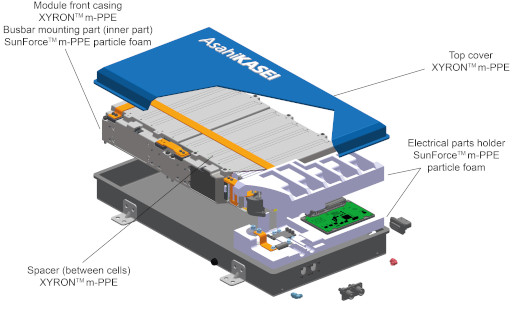

With the rising demand for alternative powertrain technologies, the needs and requirements for high-performance materials for structural battery parts are also increasing. Modified polyphenylene ether (m-PPE) and foamed m-PPE offer promising applications which contribute to the overall efficiency, safety and designability of batteries.
Sales of electric vehicles are being increasingly promoted by regional CO2 emission limitations and support measures by governments. Experts estimate that the market for electric vehicles will grow to a maximum of 17.8 million vehicles per year in 2025, based on a total worldwide vehicle sales of 114 million vehicles per year. Until the breakthrough of a next-generation battery technology, the lithium-ion battery will be the main driver for the electrification in the automotive industry.
As a pioneer in the field of lithium-ion battery technology, the Japanese technology group Asahi Kasei, which is striving to expand its business in the field of electromobility in Europe, has established itself in this respective market. In the early 1980s, Akira Yoshino, researcher and later manager in the company, succeeded in developing the first commercial prototype of a lithium-ion battery. Utilizing Asahi Kasei’s polymer and membrane technologies, Yoshino furthermore developed a functional microporous membrane, which as a separator contributes to the overall safety of lithium-ion batteries. Currently the company offers the worlds broadest product portfolio in this field with two different types of separators the wet-process HIPORETM, and the dry-process CelgardTM separator.
m-PPE with outstanding properties
Next to high-performance separators, materials for structural parts of the battery pack will play a key role in the fields of battery efficiency, safety and design. Asahi Kasei as a comprehensive material supplier for the automotive industry proposes the use of modified polyphenylene ether (m-PPE) and foamed m-PPE as suitable materials to solve the above mentioned issues. As shown in figure 1, various grades of the company’s XYRONTM m-PPE is already used for a broad range of structural battery parts.
Fig. 1) Asahi Kasei concept battery pack


The key features of m-PPE for automotive battery packs are its UL94 V-0 flammability, dimensional stability and light weight. Although the flammability of plastics materials in electrified vehicles is not actually regulated, automotive manufacturers and suppliers are selecting halogen-free V-0 materials in order to avoid any possible fire caused from electric circuit trouble. Thanks to its high oxygen index, m-PPE can easily achieve the UL94 V-0 flammability standard by adding a few amounts of flame retardants without reducing its original properties. In addition to the high flame retardancy, the change in dimension under high temperatures and humid environments is minor, because m-PPE features the lowest coefficient of linear thermal expansion (CLTE) and the lowest moisture absorption of any engineering plastic (Fig. 2 + 3). These properties allow the precise alignment of cells in battery modules, therewith increasing the battery’s efficiency.
Fig. 2) Coefficient of linear thermal expansion


Fig. 3) Water absorption (%)
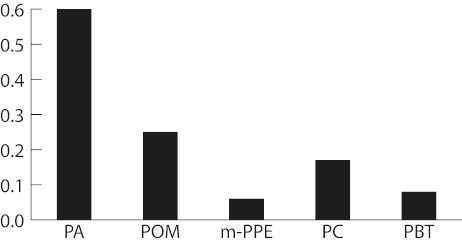

Furthermore, m-PPE has the lowest density among engineering plastics which contributes to a compact and weight saving battery design (Fig. 4).
Fig. 4) Density (g/cm3)
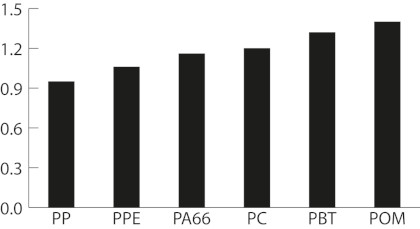

Asahi Kasei’s XYRONTM m-PPE has a long history in battery applications, since the company was involved in the battery development of the Toyota Prius, the first hybrid vehicle introduced in 1997. Asahi Kasei developed a unique XYRONTM polymer alloy of polyphenylene ether and polypropylene (PP/PPE) for the Ni-MH battery cell case of the Prius. Its chemical resistance, dimensional accuracy and moisture barrier properties have been highly reputed from the industry and XYRONTM is still considered the best material for Ni-MH battery cells.
Four case examples of m-PPE battery applications
Battery Spacers
Car manufacturers are continually looking for new lightweight and space-saving components. The battery spacer in figure 5 is made of m-PPE XYRONTM 340Z with V-0 flame protection class and provides electric insulation between battery cells. The material can be injection-molded, thereby allowing a compact spacer design with a wall thickness of 0,4mm. With XYRONTM TF700, Asahi Kasei moreover offers a PP/PPE alloy with V-0 flame protection class and improved chemical resistance.
Fig. 5) Injection molded battery spacer prototype


Components with high stiffness
Customers not only require space-saving components but also material with high mechanical strength and dimensional accuracy. These properties allow the production of compact and easy-to-assemble battery modules. Plastics with V-0 flammability for structural battery components such as frames or cell holders are also coming to the fore. The materials XYRONTM G601Z and L543Z meet the requirements for these application fields.
Electric Bus Bar Covers
This part supports the high electric current of the copper busbar in the battery. Therefore, longer lifetime under copper contact are required. Asahi Kasei proposes XYRONTM X9110 as the most suitable material for this application with its excellent dimensional stability, higher heat resistance and longer lifetime under copper contact than other materials such as polypropylene.
Fig. 6) – Electric busbar cover
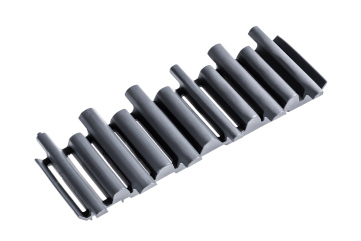

Fig. 7) Lifetime under copper contact @150 °C


Lightweight V-0 m-PPE foam
The properties of m-PPE were taken to the next level by a combination of foam beads, offering various battery application opportunities. Asahi Kasei’s SunForce™ is a foam material combining the characteristics of m-PPE resin and foam beads. It is the first-of-its-kind material certified with UL 94 V-0. The material resembles expanded polypropylene (EPP) and can be processed with the same equipment, but features a higher dimensional stability and the abovementioned excellent flame retardance.
Fig. 8) Foamed m-PPE SunForceTM
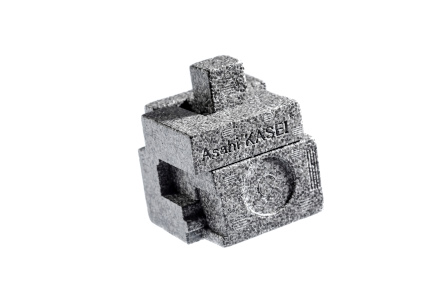

This material is suitable for application fields such as automotive battery packs, lightweight shock absorbers, sandwich composite cores as well as for thermal insulation. Consisting of small-sized beads, the material features high moldability which contributes to assembly time reduction and lower production costs. It also allows the moulding of complex structures while maintaining strength and rigidity. Its thin-wall moulding ability contributes to compact and space-saving product design. Foamed m-PPE proves to be suitable for lightweight shock absorbers, as well as material for circuit sealing and heat insulation of automotive battery packs. As lithium-ion batteries show their full performance only at room temperature, both heating and cooling unit are installed to the automotive battery pack, especially for PHEV and BEV. However, creating the right temperature environment for the battery consumes a significant amount of energy, so an optimized thermal management of battery packs will be become increasingly important with rising popularity of electric vehicles. Foamed m-PPE offers a promising solution for this issue.











